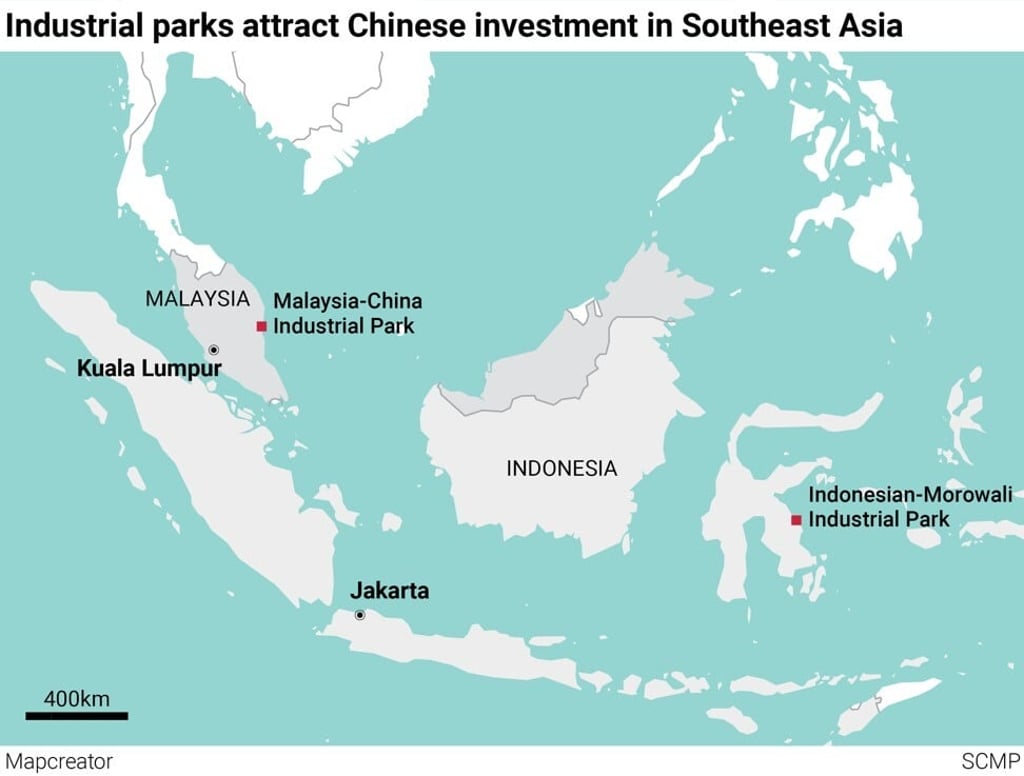Advertisement
Opinion | Have Chinese investments in Indonesian and Malaysian industrial estates brought long-term gains?
- The two countries have welcomed Chinese investment to boost industrial capacity and develop outlying regions
- The investments have paid off through increased taxes, jobs and economic activity, but questions remain over technology transfers, environmental concerns and Chinese workers
Reading Time:5 minutes
Why you can trust SCMP
0

Chinese companies have tended to conduct investments in Southeast Asia through subsidiaries in Singapore, leveraging the city state’s advantage as a financial hub.
For Indonesia, the first wave came in 2008 and coincided with Tsingshan Group’s investment in the mining industry in Sulawesi. The second wave came in 2015. This coincided with the signing of a comprehensive strategic partnership between Indonesia and China. Since then, Tsingshan has invested significantly in smelter projects in Sulawesi.
For Malaysia, Chinese investments increased after 2013 and grew steadily up until 2018. The investments are spread over a large number of sectors, ranging from infrastructure to manufacturing and services. In terms of approved investments in Malaysia’s manufacturing sector, China was the largest source country from 2016 to 2019.
For Indonesia and Malaysia, Chinese investments are linked with the countries’ own ambitions to promote industrial capacity as well as develop outlying and backward regions. Both economies have made special arrangements to facilitate Chinese investments especially in two key industrial estates – the Indonesian-Morowali Industrial Park (IMIP) and the Malaysia-China Industrial Park (MCKIP).
INDONESIA
Advertisement


